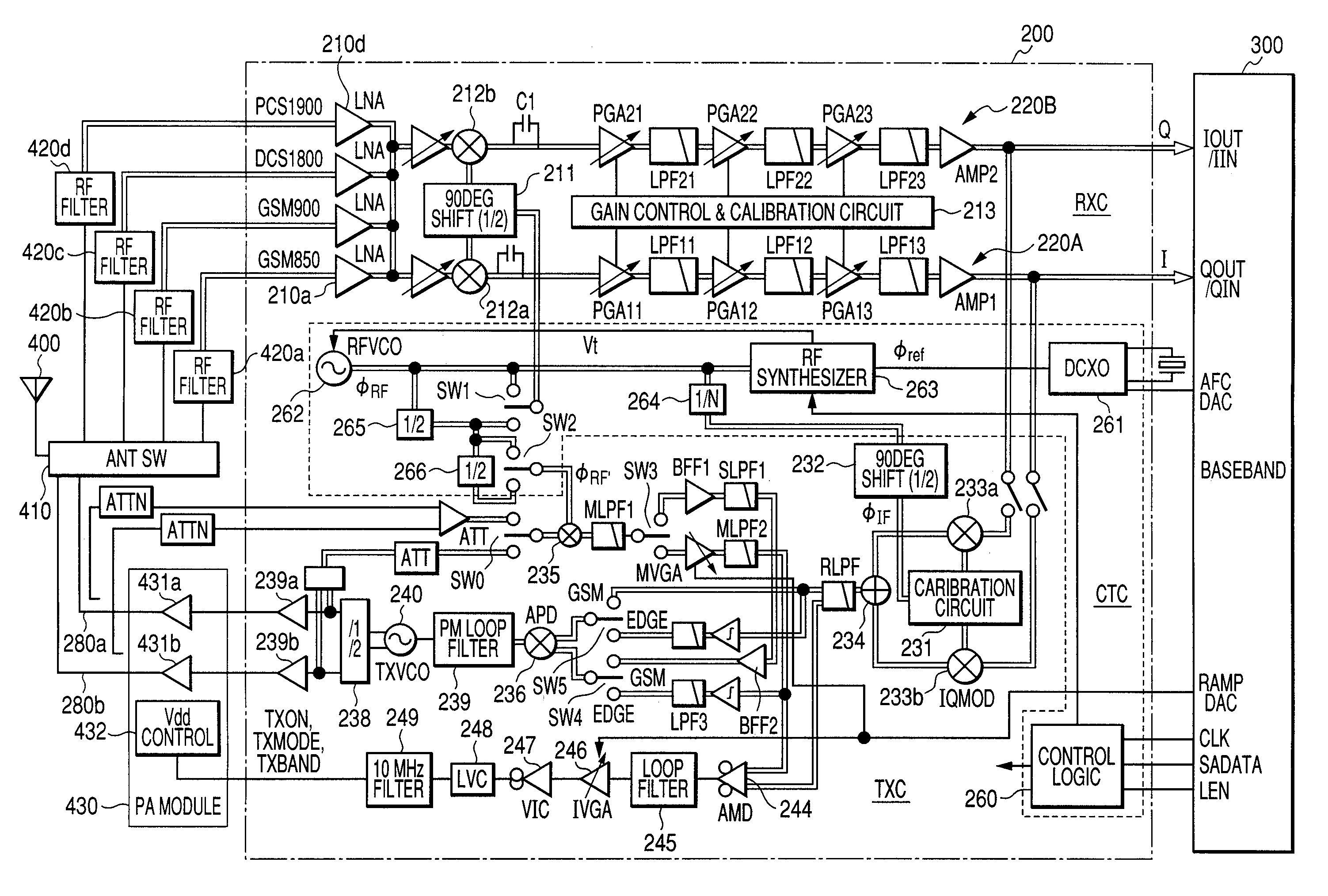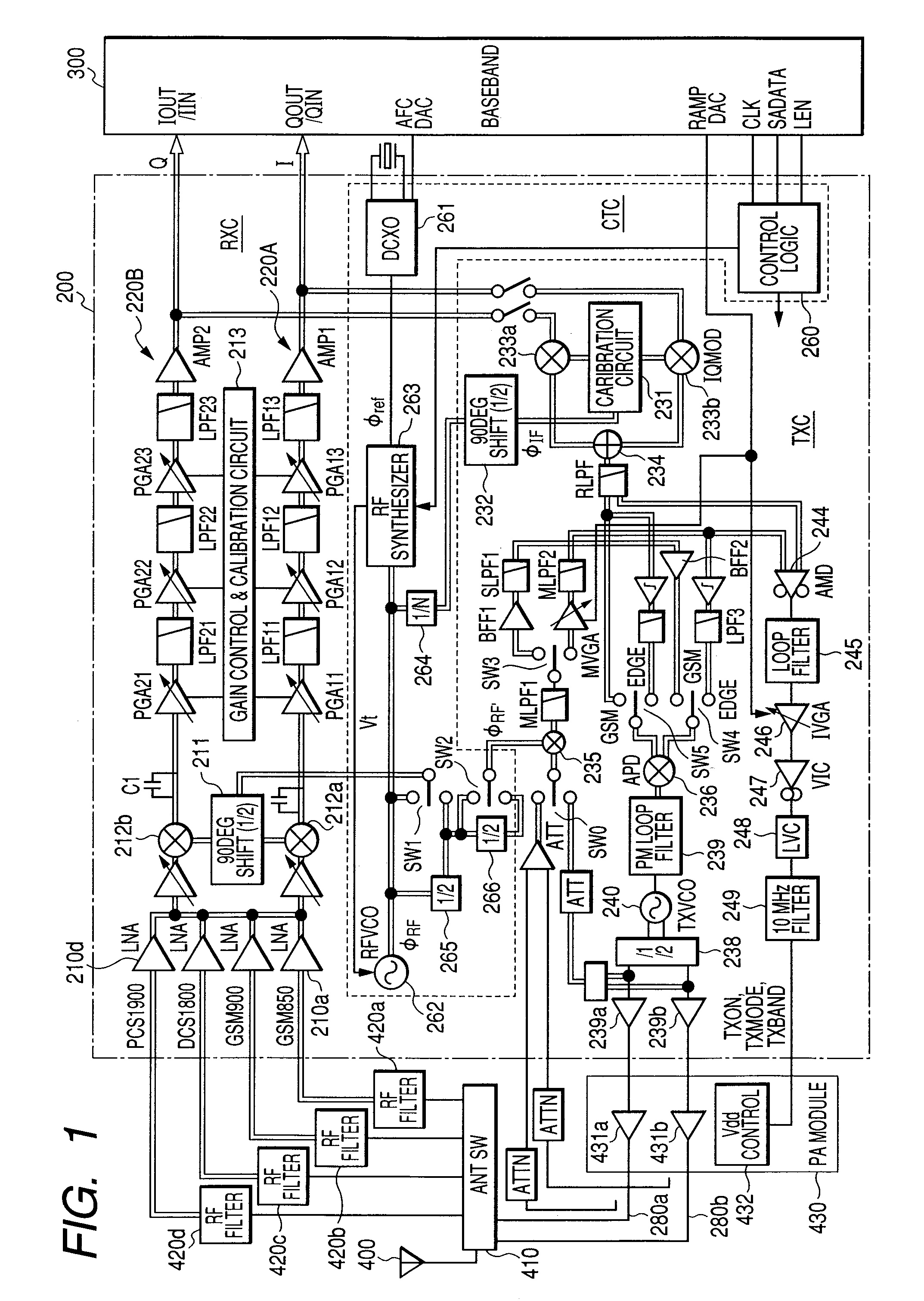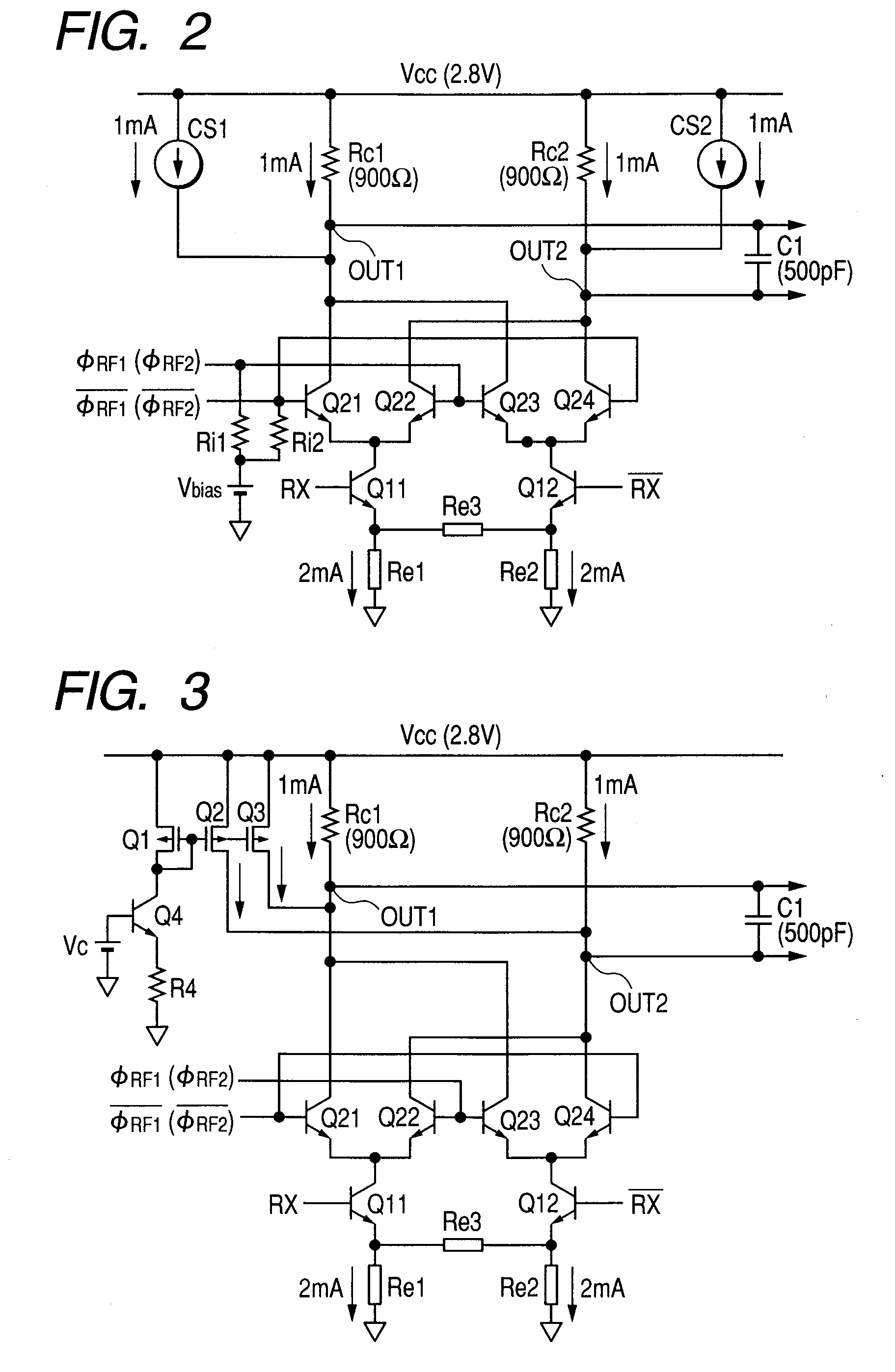Semiconductor integrated circuit
a technology of integrated circuits and semiconductors, applied in the direction of demodulation, electrical equipment, transmission, etc., can solve the problems of large chip size and inability to make smaller chips, and achieve the effect of reducing the number of downconverting signals, and reducing the number of system components
- Summary
- Abstract
- Description
- Claims
- Application Information
AI Technical Summary
Benefits of technology
Problems solved by technology
Method used
Image
Examples
second embodiment
[0052]FIG. 4 shows an example of configuration of a mixer circuit according to a
[0053]In this embodiment, a current mirror circuit including PMOSFETs is used as the current sources CS1 and CS2. The drain terminals of the PMOSFETs Q2 and Q3 included in the current mirror circuit are connected to the collectors of the lower stage differential transistors Q12 and Q11 of the mixer circuit, respectively, so that the currents from the PMOSFETs Q2 and Q3 are directly applied to the lower stage differential transistors Q12 and Q11. Using this configuration causes no problem circuitwise, since the impedances of the PMOSFETs included in the current mirror circuit are adequately higher than the impedances of the collector connection nodes of the lower stage differential transistors Q12 and Q11.
third embodiment
[0054]FIG. 5 shows an example of configuration of a mixer circuit according to a
[0055]In this embodiment, resistors R1 and R2 connected between a supply voltage terminal and the collectors of the lower stage differential transistors Q11 and Q12, respectively, are used as the current sources CS1 and CS2 for current application. A suitable resistance range for the resistors R1 and R2 is from several hundred ohms to several kilo-ohms. When the resistors R1 and R2 each having a resistance in the range of several hundred ohms to several kilo-ohms are connected between the supply voltage terminal and the collectors of the lower stage differential transistors Q11 and Q12, respectively, the resistors R1 and R2 are higher in impedance than the collector connection nodes of the lower stage differential transistors Q11 and Q12, so that no problem is caused circuitwise.
[0056]When PMOFETs are used in a mixer circuit, they generate larger noise than resistors. In terms of the noise characteristic...
PUM
 Login to View More
Login to View More Abstract
Description
Claims
Application Information
 Login to View More
Login to View More - R&D
- Intellectual Property
- Life Sciences
- Materials
- Tech Scout
- Unparalleled Data Quality
- Higher Quality Content
- 60% Fewer Hallucinations
Browse by: Latest US Patents, China's latest patents, Technical Efficacy Thesaurus, Application Domain, Technology Topic, Popular Technical Reports.
© 2025 PatSnap. All rights reserved.Legal|Privacy policy|Modern Slavery Act Transparency Statement|Sitemap|About US| Contact US: help@patsnap.com



